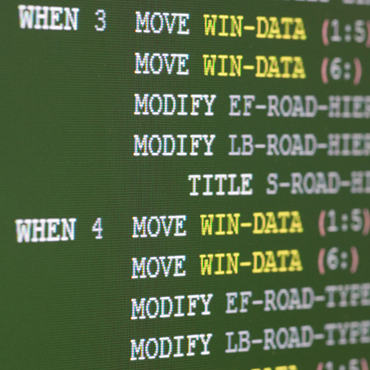COBOL still integral to government systems

If the hundreds of billions of lines of COBOL code ceased to function, stoplights would crash, ATM machines would fail and a whole host of other systems would fail.

Many of the federal government’s older mission-critical systems still run on Common Business-Oriented Language (COBOL), a programming language developed in 1959, a full decade before Neil Armstrong set foot on the moon.
Despite the growing prevalence of modern programming languages such as C++, .NET and Java, good old COBOL is still responsible for more than 70 percent of the world’s business transactions. Were the hundreds of billions of lines of global COBOL code to suddenly cease functioning, stoplights would crash, ATM machines would fail and a whole host of other system failures would make civil society almost unrecognizable.
Yet in the age of disruptive technologies like cloud and mobile computing, big data and social media, COBOL has developed a reputation as outdated and “uncool,” said Micro Focus product marketing director Ed Airey, speaking at COBOL Developer Day in Washington on Dec. 12.
The stigma that COBOL can’t compete with new-school programming languages is furthered by the fact that only about one-quarter of colleges across the country are teaching COBOL in their curriculums, and only 20 percent of those schools require that programming graduates take it.
That could present a sizable problem in the near future as up to 10,000 U.S. workers a day will be retiring for the next 19 years, creating a shortage of COBOL-trained programmers. The Defense Department, Airey said, still employs a COBOL programmer in his 80s.
“Yes, colleges are producing developers, but with what skills?” Airey asked, noting that only five percent of programmers hitting the job market are fluent in COBOL. “We are facing a skills challenge.”
COBOL is most often associated with the government’s legacy IT systems and core databases, Airey said.
These are the systems that suck up approximately 70 percent of the government’s $82 billion IT budget, leaving only 30 percent to spend on innovative technologies.
As agencies look to modernize their IT systems, they too must decide whether to replace their COBOL code or repurpose it. This can be an expensive and difficult endeavor – the Defense Department has struggled with it for 15 years.
For those reasons, it is likely that systems running COBOL – at least on the back end – are likely to be a mainstay for many more years to come.
“COBOL still remains the most readable programming language ever invented, and it maintains that characteristic that no other language has decided is important,” said Micro Focus’ Scot Nielsen.



